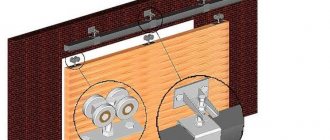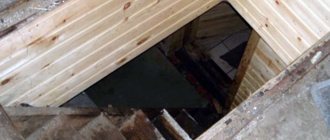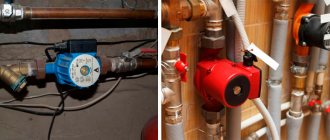How does an open heating system work?
There is no need to install a pump to start the system. The coolants are constantly in a closed system, so there are no losses. Installation of the heating system is so simple that it does not require special skills.
Open heating system
What are the main parts of the system?
- Gas or solid fuel boiler. The consumer can choose the best option that meets the desired requirements;
- Heating radiators. You can make your choice in favor of either cast iron or steel;
- Expansion tank made of steel;
- Pipes.
How does an open heating system work?
The first step is to heat the water in the boiler. Hot water then flows under pressure into the pipes and reaches the low pressure zone. After the hot water makes a complete whirlpool and gives off heat, it returns to the starting point - the boiler. Due to the fact that water expands under the influence of high temperatures, an expansion tank is required in the system. It acts as a compensator for excess water volume. The tank is an object that is not sealed hermetically. To make it easier to start the heating system, it is necessary to install a mortise tap. With its help, air is removed from the system. The operating principle of an open heating system is divided into two stages:
- "Innings". The water is heated, flows through pipes into radiators and heats the room;
- "Treatment". The cooled water from the radiators is returned through the pipes to the boiler.
Features of the arrangement of an open heating system:
Be sure to place the expansion tank above the level of other heating system devices;
Choose water rather than antifreeze as the coolant; Since water can evaporate when heated, it is important to monitor its level in the boiler and replenish reserves in a timely manner.
How to connect gas pipes
Preferably a welded connection of pipes for gas. Connection points for gas fittings can be connected with flanges and threads. The threads are sealed with flax, which is coated with red lead paint or lead white paint. A more modern seal is FUM tape (fluoroplastic sealing material).
When laying an internal gas pipeline, you will have to bend it. Bend radii are standard. When installing pipes up to Ø4 cm, the bending radius must be at least 2.5 times the pipe diameter. For pipes 4-5 cm, the bending radius is at least 3 times the diameter. Pipes of other diameters do not bend in the gas pipeline.
Flange connection of gas pipeline pipes
You can see the flange connection of the pipes in the photo. This connection requires gaskets. They are made from paronite. A flange connection is unlikely to be needed in the internal gas pipeline of a house, although it is possible in a DRP.
Connecting gas pipes by welding
The main connection of gas pipes in the house is welding. Any welding can be used:
- Electric arc welding by hand (electrodes No. 42, 42A, 46, 46A, 50A).
- Automatic welding with fluxes and wire Sv-08-A, Sv-08-GA.
The same wire is used in gas welding. In the internal gas pipeline of the house, you need to use fittings (valves, valves, taps) only designed for operation in a gas environment.
Schemes for water heating in a private house
To heat cottages, heating systems with water as a coolant are installed, consisting of:
- water heating boiler (single-circuit or double-circuit);
- pipelines and fittings (metal or polypropylene);
- bypasses that allow you to disconnect individual heaters from the network;
- batteries (cast iron, aluminum, steel and bimetallic);
- expansion tank.
Gas heating units are equipped with a specific safety system, including a solenoid valve and a thermocouple. The devices are connected to each other by wires. If the heating unit is functioning normally, the thermocouple junction is heated by the igniter. At this time, current flows freely through the winding of the solenoid valve, which ensures the open position of the valve. When the thermocouple cools down, the gas access is blocked by an electromagnetic valve.
According to the battery connection diagram, they are single-pipe and double-pipe. In the first case, water is supplied and discharged from the radiator using one pipe. In the second, the heating device is connected to two separate pipelines (supply and return).
Heating pipes to the radiators can be connected in a bottom, top, side or diagonal pattern
Heating circuits, based on the principle of water movement in pipes, are available with forced and natural circulation. When installing the second option, the coolant circulates in the system due to convection and gravity. And the forced scheme involves the installation of a circulation pump.
To ensure normal operation of a system with two or more circuits connected to the manifold, it provides for the installation of a hydraulic arrow. The hydraulic arrow eliminates pressure drops and the possibility of water hammer.
The expansion tank can be open or closed (divided inside into two parts by a sealed membrane). For gravity heating systems, an open option will be sufficient. A closed tank is designed for forced circulation circuits.
When using an open expansion tank, the water is saturated with air, so that this does not become a problem, the system should be supplemented with an air removal circuit
For small cottages, the natural principle of water movement will be sufficient. However, if a residential building has two or three floors, then you cannot do without a pump. The length of the circulation circuit in the first scheme is limited to 30 meters. The boiler will not be able to “push” water over a greater distance.
With natural circulation of the coolant in the gas heating circuit of a private house, there is no pump. If the boiler is chosen to be non-volatile, then the entire heating system is independent of the power supply. There are simply no elements that consume electricity.
On the one hand, it is more stable in operation, but on the other, the quality of heating in it is lower (the water reaches the radiators farthest from the water heater when it is very cold). The latter especially applies to pipelines and batteries made of steel or cast iron. These materials have high hydraulic resistance, which reduces the coolant current.
In addition to using standard radiators in a country house, you can organize gas heating using “warm floors” (+)
It is also possible to organize a combined heating system. In it, the circulation pump is connected to the main line through a bypass. If it is necessary to quickly warm up the air in the rooms, it is turned on to accelerate the water circulation. In other cases, it is cut off from the main pipe by shut-off valves, while the system continues to function in a natural (gravitational) mode.
We calculate gas consumption for heating a house
For autonomous gas heating of a private house, gas consumption is calculated according to the following scheme. To obtain 1 kW of thermal energy, you need to consume 0.1 m³ of gas per hour . For a room of 200 m² you will need a boiler with a capacity of 20 kW. In this case, the consumption of such a boiler will be 20x0.1=2 m³/hour.
A standard heating season includes approximately two equal intervals: three very cold and three moderately cold months (rounded up to 100 days each). As a result, the system operates at full capacity for 100 days and the same at half load or less. So, the average gas consumption for the cold season will be: 20x0.1x24=48 m³, for the next period this figure will drop to 24 m³. As a result, the total consumption for the entire heating period will be (48x100)+(24x100)=7200 m³. Most often, the final numbers come with a good cape and turn out to be larger.
Please note that the calculation is made without taking into account expenses for household needs such as cooking. These figures should be included separately.
Water heating
Undoubtedly, when asked what types of heating there are, it is water heating that first comes to mind. Water heating has the following advantages:
- Not very high surface temperature of various devices and pipes;
- Provides the same temperature in all rooms;
- Fuel is saved;
- Increased service life;
- Quiet operation;
- Easy to maintain and repair.
The main component of a water heating system is the boiler. Such a device is necessary to heat water. Water is the coolant in this type of heating. It circulates through closed pipes, and then the heat is transferred to various heating components, and from them the entire room is heated.
Components of water heating
The simplest option is natural circulation. This circulation is achieved due to the fact that different pressures are observed in the circuit. However, such circulation can also be of a forced nature. For such circulation, water heating options must be equipped with one or more pumps.
After the coolant passes through the entire heating circuit, it is completely cooled and returned back to the boiler. Here it heats up again and thus allows the heating devices to produce heat again.
Classification of water heating systems
Water heating type may vary according to criteria such as:
- water circulation method;
- location of distribution lines;
- structural features of risers and the diagram according to which all heating devices are connected.
In a pump heating system, heating of the coolant can also take place thanks to a hot water boiler room, or thermal water that comes from a thermal power plant. In a heating system, water can even be heated by steam.
Water heating with circulation pump
The disadvantage of direct-flow connection is the dependence of the thermal regime on the “impersonal” temperature of the coolant in the external-type supply heat water.
Fee for gas connection to a private house
After completing all legal formalities, the contractor sends an application to the executive body for tariff regulation to establish the cost of technological connection. In this case, the customer must be notified no later than 5 days from the date of sending the application. The application is accompanied by a connection agreement, a positive expert opinion of the estimate and design documents, estimate documentation indicating the cost of each type of work.
Having studied all the documentation, the executive authority, within 22 days, excluding weekends, approves the amount of payment for each type of work separately. If the applicant refuses to connect the household to the gas pipeline after concluding an agreement and conducting examinations, the owner of the household will compensate the contractor for all confirmed expenses.
Features and Benefits
Heating systems differ in the configuration of the expansion tank - a special container that compensates for the thermal expansion of the coolant. An open tank is installed in a gravity system - the liquid moves through the pipes without installing a circulation pump for heating. The coolant moves due to the natural circulation of the medium, which changes density when heated and under the influence of gravity.
A feature of a closed system is the use of a closed expansion tank, which is a sealed container equipped with an elastic membrane inside. This ensures efficient operation under pressure and eliminates contact of liquid with air.
Internal structure of closed expansion tanks
With forced circulation
A closed-type heating system in a private house may include a circulation pump that forces the coolant to actively move, maximally warming up all heating devices or the heated floor circuit.
A closed heating system with forced circulation has a number of advantages
:
Heating of a liquid under pressure occurs faster; the risk of airing of the pipeline and radiators is reduced; evaporation of the coolant (which is especially important when using antifreeze) and the penetration of oxygen into the liquid, which provokes corrosion of the metal elements of the system, are prevented; due to the installation of the membrane tank below next to the boiler, and not at the top point of the circuit, as in open systems, installation and maintenance are simplified; the movement of liquid under low pressure simplifies the calculation and installation of the pipeline - unlike a gravity system, in this option there are no strict requirements for the angle of inclination of the pipes and pipes of smaller diameter can be used; there is no need to use large-diameter pipes and install them in an open manner in order to have access to any part of the system to eliminate air pockets.
Example with an induction boiler
The heating system of a private house with a circulation pump and a membrane expansion tank provides better heating of the premises compared to gravity. But it has one significant drawback - energy dependence. The operation of the pump requires electricity, so this option is not suitable for buildings in remote areas with insufficient power supply or its complete absence.
With natural circulation
The gravity heating system is energy independent, and this is its advantage. Typically this is a heating system with a solid fuel boiler or stove; liquid fuel units are less commonly used.
Heating without a pump is suitable for a home with a relatively small area; it is important to correctly calculate the diameter of the pipes for each part of the system and design their installation scheme, observing the optimal angle of inclination of the pipeline sections. It is necessary to reduce the risk of airing and ensure efficient movement of coolant
A circulation pump can be added to a closed heating system with natural circulation at any time, increasing its efficiency. This is the best option for areas where there are problems with power supply. In this case, if there is a temporary lack of electricity, the house will not be left without heat - a closed-type system in a private house will work like a gravitational one.
Natural circulation
The best schemes for a two-story house
In each specific case, it is necessary to develop an individual heating project that will ensure efficient and economical operation.
To make the right choice, you should consider the following factors:
- climate and quality of building insulation;
- number and purpose of premises. Is constant and uniform heating required everywhere?
- the stability of the electricity supply and the presence of a generator largely determine the type of circulation;
- individual wishes of the residents - warm floors or walls in individual rooms or throughout the house, etc.;
- layout of the premises - is perimeter wiring feasible;
- design requirements and renovation stage. In many cases, all pipes, and sometimes even heating devices, can be hidden in the floor and walls;
- budget - the estimate for installing heating in one building can differ several times or tens of times.
By answering all these questions and knowing the features of different schemes, you will get an idea of the required option.
Do not chase overly complex schemes: sometimes primitive ones are more reliable and no less effective, and there is no need for fine tuning
Next, we suggest choosing one of the proven effective schemes for connecting heating devices to the boiler and adjusting it in accordance with your layout.
Single-pipe Leningradka - reliable and cheap
This one-pipe scheme is one of the cheapest, simplest and oldest, but relevant and popular to this day. Using only radiators allows for a mixed type of circulation in case of a power outage. To do this, the gas boiler must be non-volatile, all pipes must have a slope of 5 - 10 mm per 1 linear meter.
To make settings easier, you can install thermostats on the supply of each battery and control valves on the battery bypasses. An additional valve on the riser will make it possible to turn off the heating circuit of a separate floor.
Warm floors can be included in the system as a separate, third circuit, or replace radiators on one floor. However, in this case, the division of flows must pass through a thermal mixer or hydraulic arrow so that the floor does not heat up to 70 - 80 ° C in cold weather, like radiators.
Also keep in mind that during a power outage, only the batteries will work, and in a strictly horizontal floor heating circuit the coolant will be idle.
For the effective operation of the Leningradka system, it is necessary to use pipes of different diameters: the supply from the boiler to the division into separate floor contours is the thickest, the floor mains are medium, and the radiator connections are of the smallest diameter
The main limitation when installing such a system concerns the heated area: a house larger than 100 m2 does not warm up with natural coolant circulation. Such a system will only save you from defrosting pipes and rupture of the boiler heat exchanger during a long shutdown, but not from the cold.
In addition, even with forced circulation, such a heating circuit is almost impossible to set up if it includes more than 5 - 7 batteries. That is, for ease of use in a large house, it is necessary to divide the circuit into a larger number of circuits.
You can read more about the arrangement of a single-pipe heating system in Leningradka in this material.
Tichelman loop with forced circulation
As we have already mentioned, this connection scheme ensures the most efficient operation and convenient adjustment of each radiator at a relatively low cost of materials.
The system can cover the entire house with one loop, be divided into 2 circuits by floor, as in the diagram, or be used only for one floor or part of it.
The system is easy to set up and maintain; if necessary, some of the batteries can be disconnected or even removed without stopping the boiler
Modern radiator heating systems are often equipped according to this plan, if it is possible to disguise the pipeline. In addition, devices of different types can be included in one circuit: radiators, convectors, heat curtains.
Manifold connection and mixed systems
Using a collector to separate not only heating circuits, but also to individually connect each device is the most modern and easy-to-use solution.
It has a number of advantages:
- beautiful - all pipes are hidden in the floor and walls;
- convenient – adjustment of any device in the manifold cabinet;
- efficient - all devices are supplied with the same hot coolant, but each of them heats exactly as much as you need;
- universal - devices of different types can be connected to one collector, regardless of the layout.
The main disadvantage of this solution is the high cost of both materials and installation. You will need much more pipes than for any other connection scheme, and laying communications in the floor, especially if the concrete screed has already been poured, will cost a lot.
It is also worth considering that such a connection completely eliminates the possibility of natural circulation.
For ease of connection and maintenance, pipes of different colors are sometimes used, red and blue for supply and return
In two-story houses, as a rule, one collector is installed in the center of each floor, but with a large number of heating devices and collectors there may be more. For underfloor heating systems, separate collectors are used, with a lower coolant temperature.
Vertical gravity scheme
In addition to the standard options described, there are also more exotic ones, such as a vertical two-pipe with natural circulation. Perhaps this is the best solution for a two-story house in which the lights are often turned off.
Due to the fact that water circulates more easily in a vertical system than in a horizontal one, and the large expansion tank under the roof acts as a collector, the most efficient and uniform heating is ensured, even without the use of a pump.
When arranging such a system, it is very important to use pipes of different diameters, depending on how many radiators they serve.
The hot water supply pipe to the expansion tank and the return line should be the thickest; The supply risers supplying the 2nd floor are slightly thinner, their lower part on the 1st floor is of even smaller diameter, and the radiator connection pipes have the smallest cross-section.
Features of solid fuel boilers
Gas supply and centralized electricity supply are still not available everywhere in Russia. Gas is cheap only in capital cities, and even there it is becoming more expensive. Electricity is expensive everywhere.
Communication networks leave much to be desired: power outages and sudden voltage changes are commonplace outside the city. It is not always possible to connect to the main gas, and purchasing liquefied gas in cylinders is an energy-intensive business.
Heating with a solid fuel boiler has several advantages:
- you can choose the type of fuel that is cheapest in your area - firewood, peat, coal, wood waste, etc.;
- solid fuel boilers are the cheapest in the category. Long-burning models are more expensive, but their thermal efficiency is higher;
- a large assortment. Automation and auxiliary strapping elements can be purchased separately if necessary;
- Unlike gas units, the installation of a solid fuel boiler does not require permission from the local administration.
Now about the cons:
- fire hazard. But both gas and diesel models have this drawback. And in case of problems with wiring - even electrical ones;
- the need to monitor the amount of wood/coal in the firebox. A solid fuel boiler cannot be simply “turned on and forgotten”. It is less often necessary to add fuel to pellet and long-burning boilers, but in this regard they are not very autonomous;
- The combustion process of solid fuel is difficult to control (for other units it is enough to turn off the gas valve or turn off the electricity). The inertia of solid fuel boilers is high, and so is the entire system.
Solid fuel boiler design
https://youtube.com/watch?v=MY-xodMMyDI
Heating scheme
The circulation of water through pipes and radiators occurs due to the upward movement of the heated liquid, as well as from the operation of the circulation pump.
Additional items:
- Shut-off valves (the more taps there are, the easier it will be to maintain and repair heating elements).
- Air vents (oxygen, which gradually accumulates in pipes, is destructive to metals; it must be vented periodically).
- Thermostat (needed to keep the temperature in the rooms at the same level, saves fuel).
Installation of a floor-standing gas boiler in an existing heating system
An expansion tank is a mandatory attribute of any system. It can be closed or open. The closed one is paired with a circulation pump. An open tank is placed as high as possible, for example, in the attic of a house.
Pipe routing
- Single-pipe.
- Two-pipe.
Single-pipe. A pipe extends from the boiler to which radiators are connected in series. The further away the radiator is from the heater, the colder it is. This scheme is the simplest and requires few materials. But it is only suitable for small houses where the coolant will not have time to cool down. In addition, the system cannot be adjusted.
Two-pipe system - all radiators are connected to the supply pipe in parallel. Each one receives the first, hot water. After passing through the battery, the water flows into the return pipe and returns to the boiler. The system is a little more expensive, but all rooms are heated evenly. Suitable for multi-room houses.
Single-circuit or double-circuit boiler - it does not matter when choosing the type of wiring.
Connecting radiators
There are three options for connecting heating radiators:
- Unilateral.
- Lower.
- Diagonal.
They differ not only in location, but also in efficiency.
Let's look at each of these options in more detail:
- One-sided option. The supply and return pipes are located on one side of the radiator. The method saves materials, but is not very effective if the radiator consists of a large number of sections (the coolant simply cools down while it reaches the last section).
- Bottom option. Outdated and ineffective (radiators give off 15–30% less heat than they could). The liquid flows where it is easier - along the bottom of the heating devices, and the upper part remains unused.
- Diagonal option. The most correct. The water enters at the top of one side of the radiator, and, having passed through the entire battery, comes out at the bottom on the other side. This installation is required for long heating appliances. With such a scheme, you can expect that the radiators will give out the passport indicators.
All radiators are universal and have 4 possible connection points. This means that the connection method depends only on your desire.
Chimney
One of the prerequisites: the boiler outlet pipe must exactly match the diameter of the chimney. Other subtleties:
- The chimney from the boiler to the head should not have more than three bends.
- There should be no connections where the pipe passes through the wall or roof.
- The pipe must be insulated in places where it passes through an unheated room.
To check whether the length of the chimney you are planning will be sufficient, perform a simple calculation. Find the volume of the chimney and the volume of the boiler. The boiler must completely “fit” into the chimney. The area S of a round pipe is determined by the formula πR2. To find out the volume, multiply the resulting number by the total length of the pipe.
Conclusion. Having studied all the intricacies and carefully thought through everything, you can proceed to installation work. Remember that connecting the boiler to the gas mains should only be carried out by gas service specialists. They are also conducting a test run of the system.
Installation of an autonomous heating system in an apartment step by step
Coordination of all planned alterations with the relevant organizations. Notifying neighbors that work is planned at a certain time. The time frame will need to be agreed upon in advance, since such repair work is always accompanied by loud noise. You don't want conflicts with your neighbors. If gas heating is planned, then a special chimney must be equipped in advance. If the device is electric, you will have to install a separate line of appropriate power in advance to power it. Where the heating device is installed, the floor finishing must be made of non-combustible material. According to the standards, a certain distance from walls and furnishings is provided. The next step will be to mark the boiler, pipes and radiators according to the prepared project. If the system operates with a gas boiler, you will need to install a gas flow meter. This is not required for electrical equipment. Buy and deliver the boiler to the installation site. While still in the store, check it for completeness, as well as for the absence of visible defects and damage. Even minor scratches on the body may indicate that the boiler was either transported incorrectly or was dropped by movers. And all this can lead to breakdowns that are not noticeable upon purchase and can only be discovered during operation. Installation of gas equipment
Particular attention should be paid to leveling the boiler horizontally and vertically; Only correct installation guarantees stable operation of such a heating device. Laying heating pipes according to the project diagram. As a rule, circuits with forced coolant circulation are used
Therefore, if a pump is not provided inside the gas boiler, then it will need to be purchased and installed. Boiler piping - connecting equipment to water supply and gas supply pipes. And also an exit to the chimney. Connecting heating radiators. If necessary, purchase and installation of new heating elements. Test launch of an autonomous heating system. It is necessary in order to find and eliminate possible leaks in joints, and check the performance of gas or electrical equipment, as well as the efficiency of the entire system.
An autonomous heating system is profitable and efficient. However, we should not forget that autonomous heating in an apartment with your own hands is an unsafe undertaking. Moreover, if you plan to use gas equipment, then only specialists should install it.
In general, we answered the question of whether it is possible to install autonomous heating in an apartment: not only is it possible, but it is often necessary. After all, utility bills are only growing every year, and heating bills are the highest.
Types of single-circuit heating
There are several classifications of single-circuit heating systems depending on various parameters. Initially, the main types of systems should be identified:
- open;
- closed.
Since water has a fairly high coefficient of expansion when heated (0.3% due to an increase in temperature every 10 degrees), it is necessary to compensate for the increasing volume of coolant so that the pipes are not damaged and an accident is avoided. Compensation is usually carried out through an expansion tank into which a polymer membrane is inserted. This membrane is elastic and, under the influence of increasing water volume, fills the tank completely.
The use of such membrane tanks is typical for closed, fully automated systems. Boilers for such systems operate on gas, pellets, and fuel oil. They are safe because when the pressure increases, the system automatically turns off.
Previously, predominantly single-circuit open-type systems were used, which were also called natural circulation heating systems. In such devices, a pipe is installed through which excess pressure and vapor are released into the atmosphere if intensive operation of the boiler causes a significant expansion of the coolant.
Heating installations for a private cottage are also divided into systems with:
- natural circulation;
- forced circulation.
Forced circulation is carried out by including special pumps and other engineering devices for pumping water into the system. This option is considered more modern, does not require the use of pipes, fittings of a larger diameter, and therefore additional labor costs, and is more suitable for multi-storey cottages where it is necessary to supply coolant to the upper floors. The use of pumps is difficult if there are problems with a constant, powerful power supply.
Spider system
The so-called “Spider” system refers to single-circuit natural circulation installations. Today, this principle of constructing a connection between the boiler and the lines leading to the radiator is considered outdated and is used mainly in settlements remote from regional centers, where problems with energy supply may arise. In appearance, the system really resembles a spider (the boiler is installed in the attic, with lines running from it), which is why it received this name among the common people. The installation is carried out with your own hands.
Leningradka system
The most reliable systems, which is also a variant of natural circulation, include Leningradka. "Leningradka" is the optimal price-quality ratio, taking into account the ease of project implementation and efficiency. The classic “Leningradka” is a complex of series-connected radiators along the perimeter of the premises with a single pipeline; the heating source is a boiler. This option is often installed in small two-story cottages using a circulation pump.
Selection and types of gas boilers
You should know that boilers have several classifications. Each type has its own right to exist and will provide good gas heating for a private home.
Single-circuit and double-circuit boilers
Single-circuit boilers are intended exclusively for heating and do not perform any other functions. Purchased if you do not need to heat hot water directly from a gas boiler.
Such boilers work directly on the heating system. They can also be used to heat an indirect heating boiler, which in turn is used to provide the house with hot water
Double-circuit gas boilers are ideal for both heating rooms and heating water. It should be noted that double-circuit boilers are not always effective for heating water. Usually only enough for one active point. If, for example, you go to the shower and someone decides to wash the dishes, then you will already take a cold shower. You should take this into account when purchasing.
Wall and floor boilers
Wall-mounted boilers are safe and automated, but often operate only on one type of gas - natural. (There are models in which you can change the burner and they will also work on liquefied gas). They can be installed in kitchens, since it is smaller in size compared to floor-mounted ones.
The power of wall-mounted boilers is often limited to 35-40 kW. Therefore, if you want to install gas heating in a large house, you will have to either install two wall-mounted boilers in cascade mode, or install a floor-standing boiler.
Floor-standing boilers are capable of heating large rooms, as they have greater power. They are universal in terms of fuel consumption: natural, liquefied, and main gas are suitable. They can be energy-dependent and independent. Often a cast iron heat exchanger is used. Due to their design, they have an efficiency lower than that of a wall-mounted one, but at the same time a longer service life.
Classification of gas boilers, main operational characteristics, recommendations for selection
Domestic gas boilers used for heating systems of private houses and apartments are divided according to the following criteria:
- Installation method;
- Power;
- Type of gas burner;
- Burner ignition method;
- Type of traction;
- Combustion chamber type;
- Number of circuits;
- Heat exchanger material.
Let us consider the characteristics of these parameters in more detail.
Installation method (location)
- Parapet . They have a small power of 5-15 kW and are used for heating apartments and small houses. Installed on the wall, or under windows. The chimney (coaxial) is discharged through a hole in the wall directly at the installation site;
- Wall mounted . The power range of wall-mounted gas boilers is 10-35(40) kW. They have small overall dimensions, some models have a stylish design that allows them to be installed in the kitchen without covering them with a false panel. Compact, the design includes all the necessary devices and control systems. They have wide functionality. Their use is quite acceptable for one- and two-story houses of small and medium size, subject to high-quality insulation;
- Floor-standing . They are characterized by high power, performance and wide functionality. A chimney pipe is required; in some cases, installation must be carried out in a special room.
Number of circuits
- Single-circuit devices, the sole purpose of which is to heat the heating fluid of the heating system;
- Double-circuit - in addition to heating, they heat water for the DHW system. There are flow-through or with a built-in boiler. The latter are more economical to operate, but have somewhat larger overall dimensions and cost. In summer, double-circuit boilers can operate exclusively in DHW mode.
Type of traction
Each type of boiler, (except electric), regardless of the type of fuel, needs oxygen for combustion. The method of its arrival is called draft.
Natural cravings . It implies the supply of air directly from the room in which the boiler is installed. Water vapor and combustion products are removed through a vertical chimney. The design of such boilers is somewhat simpler, and the cost is correspondingly lower. In addition, they have additional advantages: quiet operation, energy independence. However, such devices are sensitive to gas pressure. At low pressure, the burner flame may go inward, causing it to burn out.
Forced draft . The design of such a boiler includes fans that supply air to the closed combustion chamber. The exhaust of combustion products and the intake of air from outside the building is carried out through the same coaxial chimney. This design has its advantages:
- Air from the room is not used, so there is no need to create a ventilation system;
- There is no need to build an expensive vertical chimney;
- Stability of operation is ensured even with a significant decrease in pressure in the gas pipeline;
- The boiler can be installed in any room, there is no need to build a boiler room;
The disadvantages of a forced draft boiler are:
- Noisy operation – the sound from the fan is quite loud;
- High price;
- Energy dependence.
Convection and condensation gas boilers
Gas convection boilers are standard type devices that use only fuel combustion energy. Such units have a simple design and relatively inexpensive cost. The main problem of a convection device is the formation of condensate consisting of water and acids on the heat exchanger. The way to combat dew is to maintain a high temperature in the heat exchanger, and for this, the temperature of the coolant in the return must be at least 60 degrees. For heating devices with boilers of this type, it is allowed to use wall-mounted radiators, registers and convectors. The heated floor system and in-floor appliances cannot be combined with a convection unit, since they will not warm your feet, but burn them.
Condensing units do not always fully utilize their energy, which is produced during the combustion process. They convert the energy of condensation of water vapor into heat
For a condensing boiler, it is important that the heat exchanger has a low temperature, as well as the return. Typically, the gas heat supply scheme in a private house with a heating unit of this type is as follows: radiators are placed under the windows and a heated floor system is installed, for which the return of the heating radiators is used, where the coolant gives off the last heat.
When heating a private house using gas equipment, the following boilers are used:
- with natural circulation
- they take air from the room into an open burner and remove combustion products, directing them to general ventilation. To install them, a separate room with an area of at least 4 “squares” with a wide door and window is required; - with forced circulation
. In this case, in order to maintain combustion, air is taken from the street, and combustion products are also discharged there through a separate air duct. The boiler can be installed even in a residential area.
Alternative methods of heating a private house
Gas is not the only heat source that can heat your home. There are several other options for keeping the room warm. But are they so beneficial compared to the gas system?
Methods of alternative heating of a private house:
- Electricity. The most common and accessible source of energy, however, it is almost the most expensive. It may simply not be enough to heat a private home, since not every electrical network will be able to transfer the amount of energy required for heating. Problems cannot be ruled out in winter. Not the most economical and practical option.
- Diesel. Diesel fuel has a high price. It tolerates a very unpleasant aroma, which cannot be removed by anything, either at home or on the street. And if you take diesel fuel of insufficiently high quality, the heating system may break down. Not the best option.
- Solid fuels. Coal and wood. They must be supplied to the heating system two to four times a day. Every day it is necessary to remove ash from the heating system. Naturally, heating a house will require a considerable amount of fuel of this kind per year. This requires large amounts of money. You should have a separate warehouse for them; in addition, they are dangerous, as they can emit carbon monoxide. In this regard, gas installations are more economical and safer.
- Pellets. These are special granules that are made from peat and wood waste. Its disadvantages are similar to the negative sides of coal and firewood: you need a room to store a large number of pellets, they do not smell very good and they often need to be loaded into the heating system. The difference is that they are cheaper than all the types of fuel listed above, except gas. And they need to be loaded less often than firewood or coal: no more than once a week. Not a bad option.
Obviously, gas heating wins in many respects: efficiency, ease of operation, minimal heat loss, low cost of the fuel itself. Therefore, if you decide to install a good heating system, then opt for a system with gas heating of the coolant.
Disadvantages of gas heating
A gas leak can lead to disastrous consequences. Be vigilant and install leak monitoring equipment.
- It is necessary to install an automatic monitoring system for possible leaks. The system depends on the supply of electricity.
- The atmospheric burner has an open flame. The security of such a device is a controversial issue for some users.
- Using a gas boiler is not advisable if the area of the room is less than 100 square meters . Such an installation is not economically profitable and is considered less safe for the environment.
- When installing a gas boiler, a chimney is also required to allow exhaust gases to be removed. In this case, the boiler room is installed in a separate room. Another condition is good ventilation and supply of fresh air to the room, and the presence of a separate exit to the street. The latter is mandatory for installations with a gas burner.
- If the gas pressure drops or the burner is worn out, the efficiency decreases and soot may appear.
- The gas boiler model should be chosen taking into account the climate. Since gas pressure in Russia can “jump” greatly, foreign devices simply cannot withstand the load. Therefore, the burner of an unadapted installation is capable of “burning itself out” when the pressure drops to the limit. Such equipment quickly breaks down.
- The need to coordinate the design and installation with the Gaztekhnadzor service. To install a gas system, you will have to obtain permission and invite an inspector to sign documents and inspect it.
Please note that Gaztekhnadzor requires a copy of the service organization's license. If different companies are responsible for the stages of work, licenses are required for each type of activity.
Heating system installation
Installation of the heating system of a country house is carried out in several stages:
- project development, obtaining permits from the relevant authorities;
- purchase of materials, equipment and preparation of tools;
- insertion into a gas pipeline that runs along the street and through which gas is supplied to residential buildings;
- preparing a place for a gas boiler, laying out pipes;
Installation of gas equipment
boiler installation; filling the system with coolant; diagnostics.
The main criterion by which the amount of materials is calculated and the model of heating equipment is selected is the area of the house. The larger it is, the more powerful the device will be needed. For a small house, a small-sized boiler is suitable, which can be installed in the bathroom or kitchen. For a cottage or two-story mansion, it is better to choose a large, powerful device.
A heating system in a private home installed in accordance with all the rules will function for a long period. Before starting installation work, you should familiarize yourself with the heating diagram and the rules for installing heating equipment.
Design and installation of gas heating
One of the main requirements for a boiler room with a gas boiler is proper ventilation.
Before taking active steps, a special project is developed for the heating system, taking into account the characteristics of the house. If the installation of a heating system in a private house and minor work can be done independently, then design is the stage at which you should not save . Design will allow you to calculate the characteristics of the equipment, reduce the costs of consumables and materials, and calculate the final cost of work and installation. The project includes:
- sketch;
- feasibility study;
- drawing up installation diagrams;
- drawing up a working draft.
The final data is affected by the thickness of the walls, the height of the ceilings, the condition of the windows, the number of people living in the house, the presence and area of heated floors, and the number of bathrooms.
Actions by stages
The procedure is as follows:
- Drawing up and approval of the project and constituent papers. The gas service gives the go-ahead for installation only after submitting a boiler house design , a contract with the installation team, and an agreement on the powers and responsibilities of the parties is also required. Most often, gas workers are responsible for supplying gas, and the design, installation and service are carried out by the service organization.
- Purchase of gas equipment, components and consumables. Although the project puts forward requirements for equipment, the price category is chosen by the buyer. Excessive savings may lead to additional expenses or repairs.
- Insertion into a gas pipeline and connection of the house to the common line.
- Installation and connection of the boiler to the system.
- Supplying coolant to the system, performing test runs and checks.
Air heating
These types of heating of various premises are considered one of the oldest. For the first time such a system was used before our era. Today, such a heating system has become widespread - both in public buildings and industrial premises.
Air heating of a private house
Heated air is also popular for heating buildings. When recirculated, such air can be supplied to a room, where the process of mixing with indoor air occurs and, thus, the air is cooled to room temperature and heated again.
In air heating systems, the air is heated by air heaters. The primary heater for such components is hot steam or water. In order to warm the air in the room, you can use other heating devices or any heat sources.
Local air heating
When asked what kind of heating there is, local heating is often equated only to industrial premises. Local heating devices are used for rooms that are used only during certain periods, in rooms of an auxiliary nature, in rooms that communicate with external air flows.
The main devices of the local heating system are a fan and a heating device. For air heating, devices and devices such as air heating devices, heat fans or heat guns can be used. Such devices operate on the principle of air recirculation.
Heat gun
Central air heating
Central air heating is done in rooms of any type, if the building has a central ventilation system. These types of heating systems can be organized according to three different schemes: with direct-flow recirculation, with partial or complete recirculation. Full air recirculation can be used mainly during non-working hours for standby types of heating, or to heat the room before the start of the working day.
Central air heating
However, heating according to such a scheme can take place if it does not contradict any fire safety rules or basic hygiene requirements. For such a heating scheme, a supply ventilation system should be used, but the air will be taken not from the street, but from those rooms that are heated. The central air heating system uses such structural types of heating devices as: radiators, fans, filters, air ducts and other devices.
Air curtains
Cold air can come in in large quantities from the street if the entrance doors in the house are opened too often. If you do not do anything to limit the amount of cold air that enters the room, or do not heat it, then it can negatively affect the temperature regime, which should correspond to the norm. To prevent this problem, you can create an air curtain in the open doorway.
Limiting the amount of cold air entering from outside the building takes place thanks to design changes in the entrance to the room.
Electric air curtains
Compact air-thermal curtains have become increasingly popular lately. The most effective curtains are considered to be “shielding” type curtains. Such curtains create a jet air barrier that will protect the open doorway from the penetration of cold air currents. As a comparison of heating types shows, such a curtain can reduce heat loss by almost half.
Paperwork and equipment selection
But before you face the installation, you will need to run around to different authorities and collect a package of documents. Prepare a passport, title documentation for the land plot and the building located on it. You also need to write and submit an application to the gas service in which you express your desire to gasify your house. After this, you will receive a technical specifications form, which is filled out by the developers. And only then can you start drawing up a project.
In the photo - gasification of a private house
You will need to enter into the following agreements:
- on carrying out work and drawing up technical documentation;
- on gasification and installation of relevant equipment;
- act of putting gas equipment into operation;
- for the supply and payment of natural gas.
In some cases, if you do not dare to have an autonomous gas supply, you will have to stretch pipes through your neighbors’ plots, and then you will need written permission from them. It is necessary for specialists to come to you and inspect the chimney in the house, and at the end they are required to issue a certificate. You will also have to visit the local architectural and planning department. The head of this organization is also required to issue a permit for gasification of the site.
It has already been said that absolutely all materials, especially pipes, taps, hoses, must have the appropriate certificates. Without such documentation, all these elements cannot be put into operation. Blue fuel flows through pipes with a diameter of 150 mm and a wall thickness of 5 mm. Basically, elements made of low-carbon or low-alloy steel are selected. In principle, both seamless and welded structures can be used. Naturally, the gas main is assembled from a fairly large number of pipes. They are connected by gas welding. There are also very serious requirements for the quality of electrodes and they cannot be neglected.
Photo of the gas main of a private house
But the list of necessary materials does not end there; you will also need a number of small parts - tees, crosses, couplings, adapters, angles and plugs. They are usually made from cast iron or steel. To properly fix all threaded elements, you should choose the right tool. For example, maximum grip on the part is provided by wrenches with notches and parallel jaws. Is it worth mentioning the boiler, water heater, stove and other equipment?
There is no need to delay installing the meter, because as practice shows, it will significantly reduce your costs.











